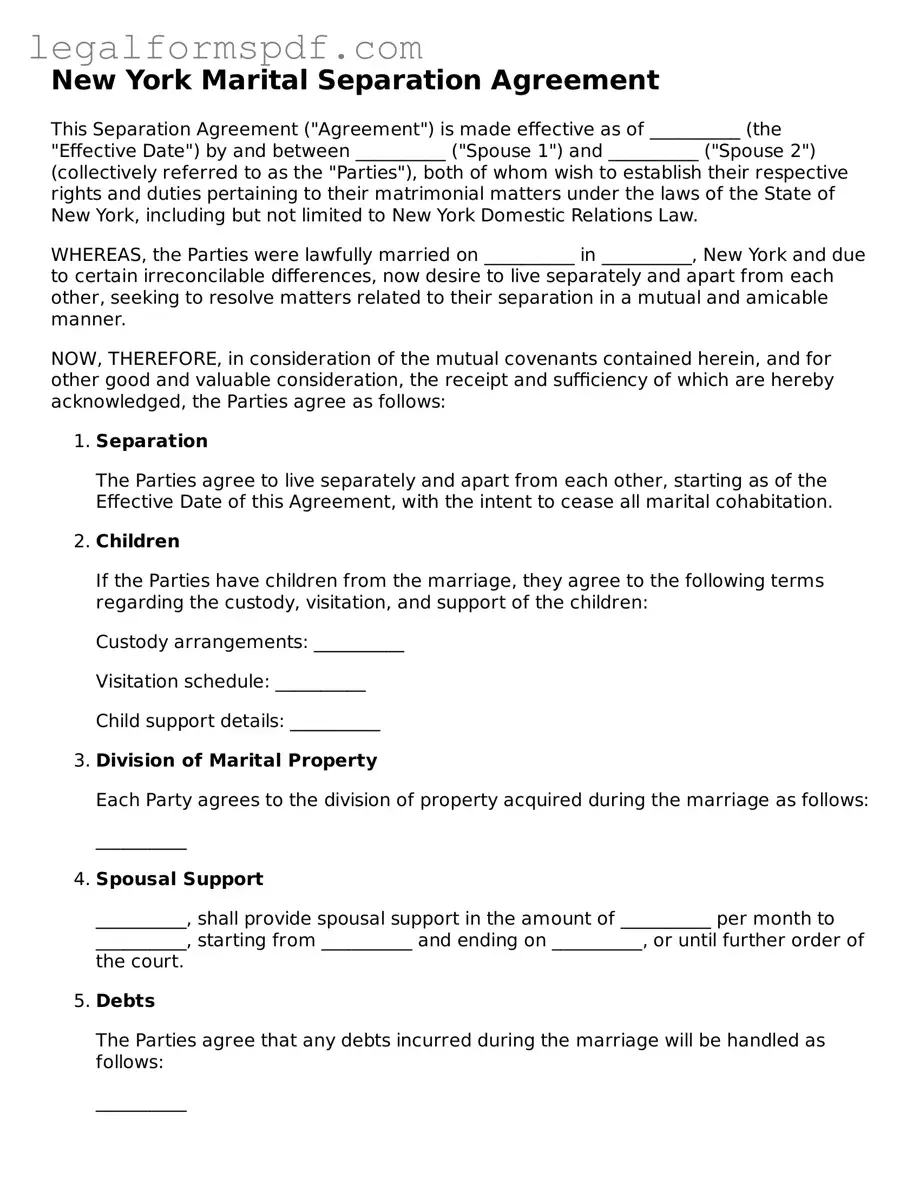What is a New York Marital Separation Agreement?
A New York Marital Separation Agreement is a legally binding document that outlines the terms of separation between married couples. It covers important issues such as division of property, child custody, spousal support, and debt allocation. This agreement allows couples to agree on the terms of their separation without court intervention, providing a clear plan for their futures apart.
Who needs a Marital Separation Agreement in New York?
Any married couple considering separation in New York may need a Marital Separation Agreement. It is especially beneficial for those who have mutually agreed on the terms of their separation and wish to avoid the complexities and expenses of court proceedings. This agreement is suitable for couples with or without children, with shared assets or debts, and who seek to establish clear terms for their separation.
How can a Marital Separation Agreement affect the divorce process?
In New York, a Marital Separation Agreement can simplify and expedite the divorce process. By resolving major points of contention ahead of time, the agreement allows couples to file for an uncontested divorce, which is typically quicker and less expensive than contested divorce proceedings. If properly executed, the terms outlined in the separation agreement can be incorporated into the final divorce decree, making it legally binding.
What should be included in a New York Marital Separation Agreement?
A comprehensive Marital Separation Agreement in New York should include sections on the division of marital property and debts, child custody and visitation schedules, child support, spousal support or alimony, and any other relevant issues such as insurance policies and tax considerations. It is crucial to address every pertinent issue to prevent future disputes and ensure the agreement is accepted by the court.
Is a lawyer required to create a Marital Separation Agreement in New York?
While it is not a legal requirement to have a lawyer create a Marital Separation Agreement in New York, consulting with a legal professional is highly recommended. A lawyer can provide valuable advice, ensure the agreement complies with New York law, and help protect your rights throughout the process. This can be particularly important in complex cases involving significant assets or disputes over custody.
How is a Marital Separation Agreement enforced in New York?
In New York, a Marital Separation Agreement is enforced like any other contract once it is signed by both parties and notarized. Should one party fail to adhere to the terms of the agreement, the other party can file a legal action in court, seeking enforcement. The court may then use its power to enforce the agreement, which can include compelling the non-compliant party to fulfill their obligations or providing remedies for any breaches.
